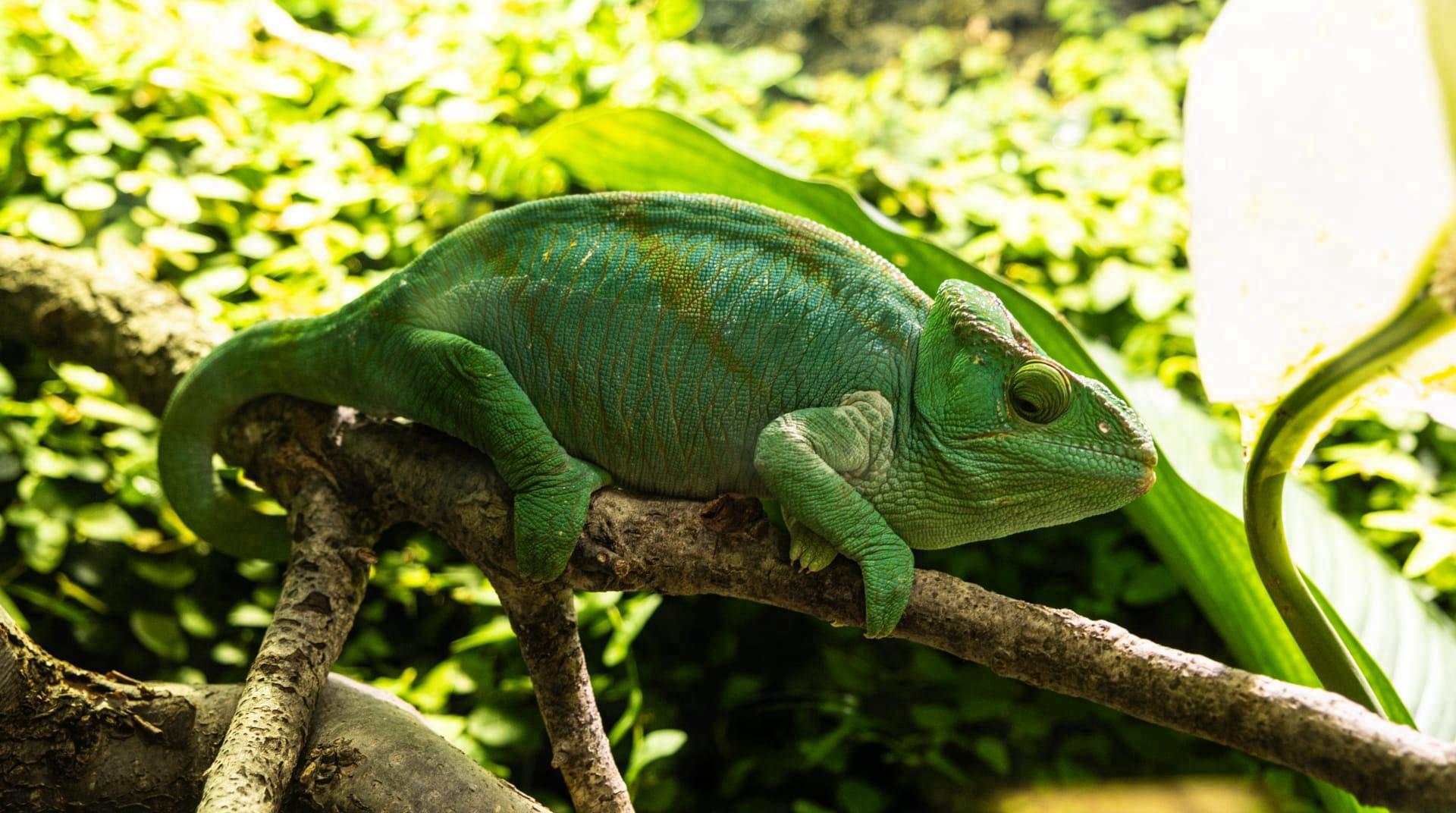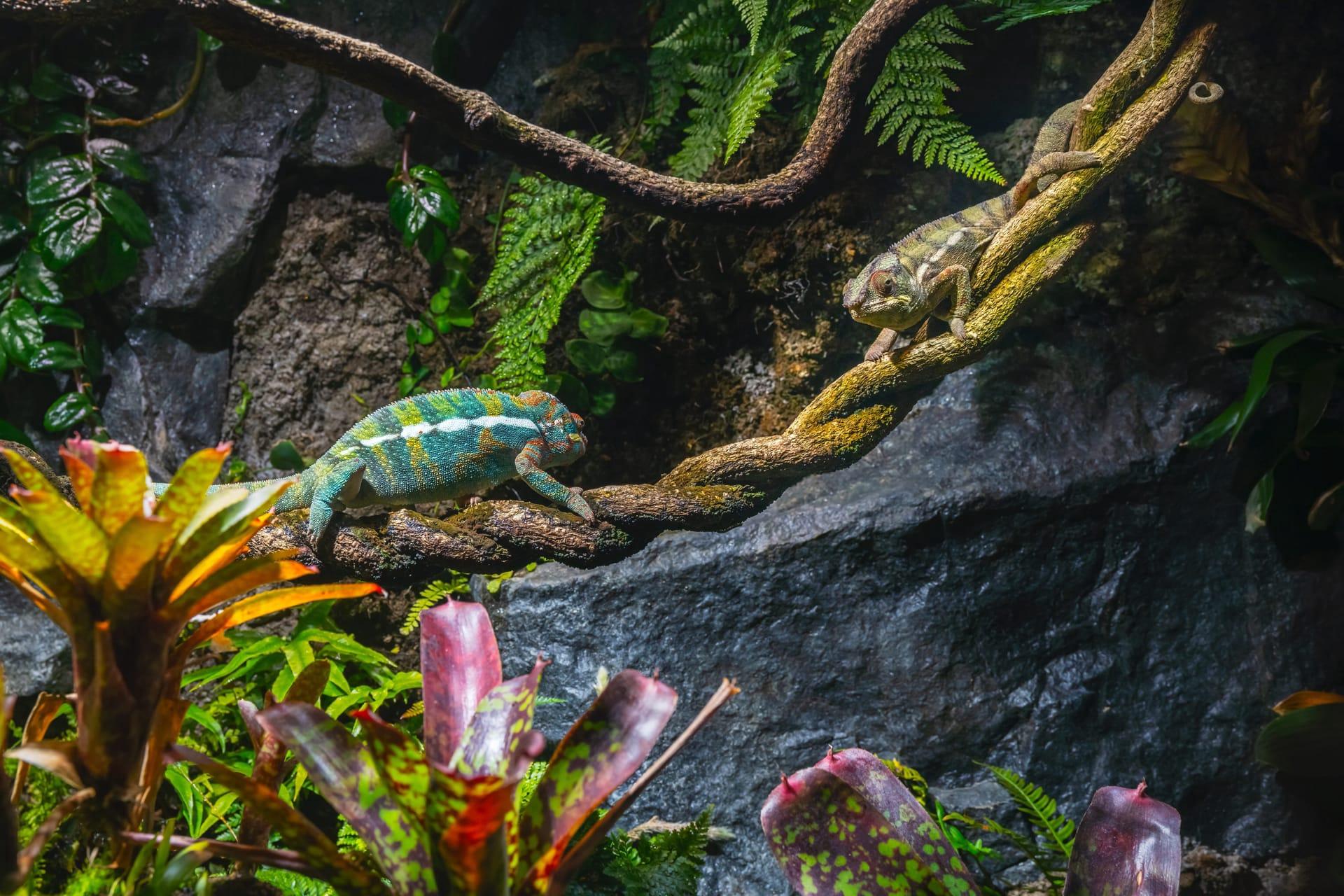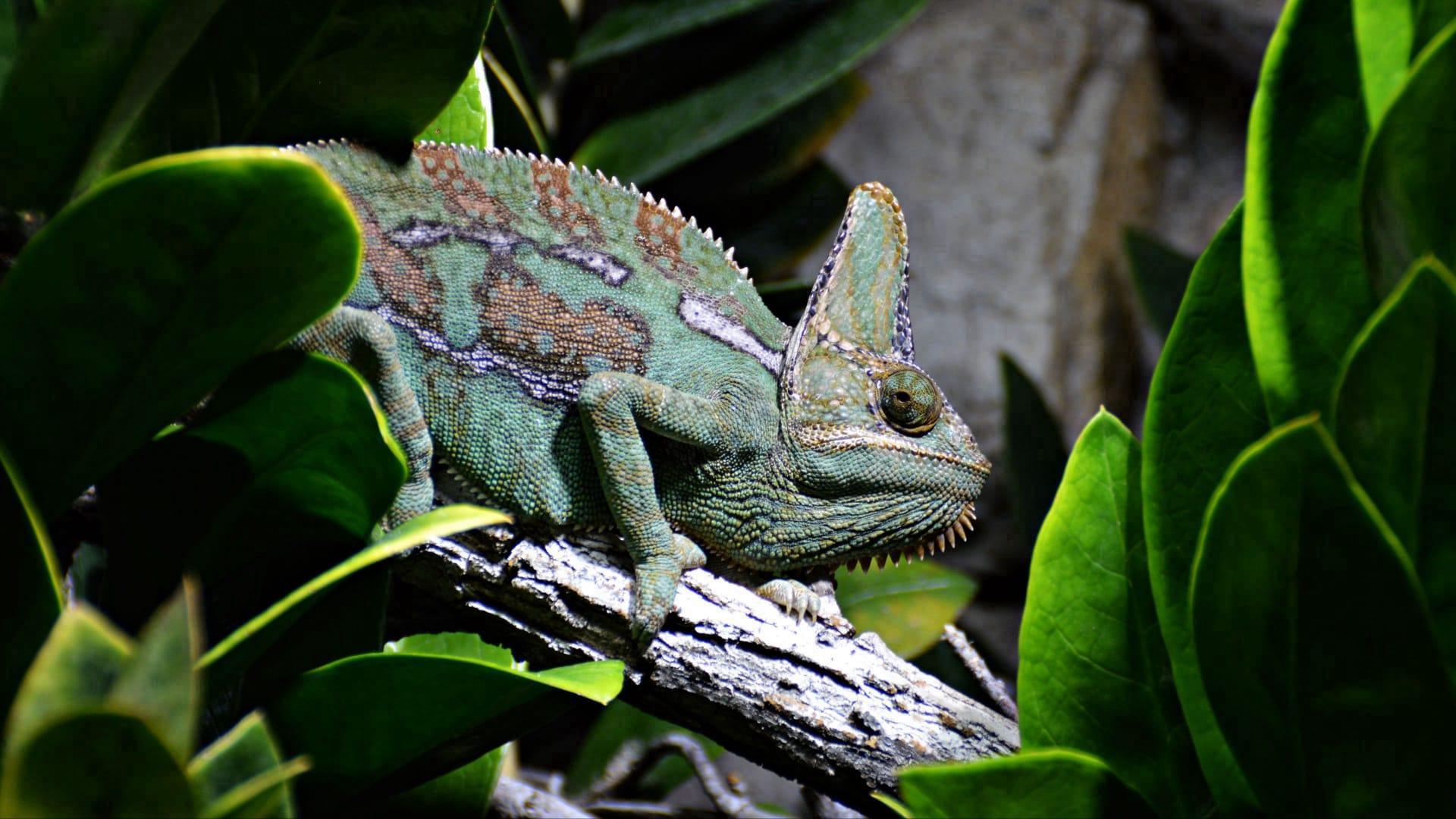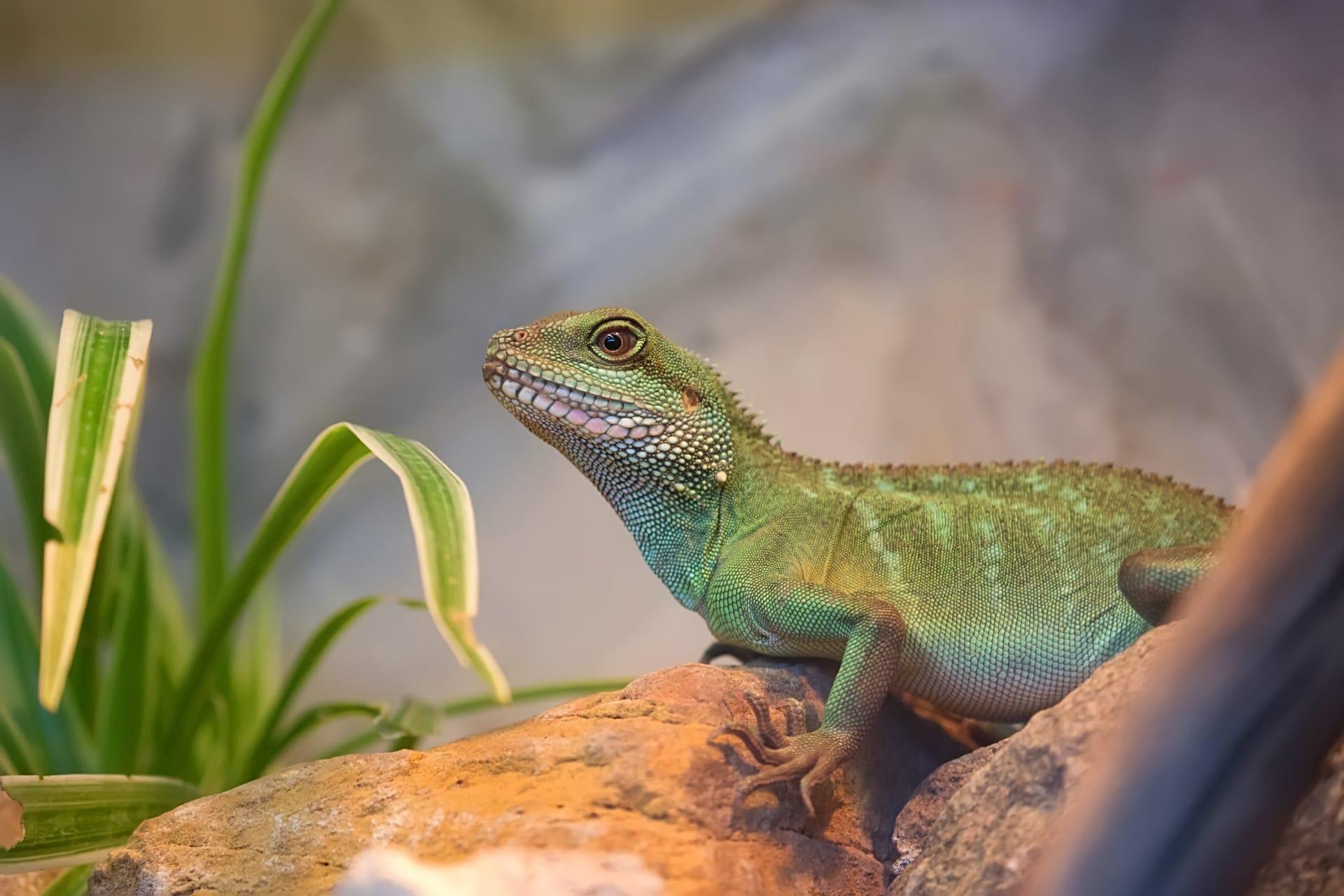Chameleon Characteristics
- Home /
- Mini Encyclopedia /
- Animal /
- Chameleon Characteristics
1
Chameleons, a distinctive branch of the reptile family, showcase a fascinating array of physical features. These creatures, known for their ability to change color, typically measure between 15 and 60 centimeters in length. However, the size can vary significantly across different species. The lifespan of a chameleon also varies, ranging from about 2 years for smaller species to up to 10 years for larger ones in captivity.
The most remarkable organ of a chameleon is undoubtedly its tongue. This extraordinary appendage can be as long as the chameleon’s body and tail combined, allowing it to catch prey from a distance. The tongue shoots out faster than the human eye can follow, extending and retracting in just about 0.07 seconds. This mechanism is aided by a specialized muscle structure and bone configuration, making it one of the most efficient predatory tools in the animal kingdom.

2
Question: Why do chameleons change their color?
Answer: Contrary to popular belief, chameleons primarily change their color not for camouflage but for communication and temperature regulation. These reptiles possess unique cells under their skin called chromatophores, which contain different pigments. By expanding or contracting these cells, chameleons can rapidly change their appearance. The color changes serve as a visual signal to other chameleons, indicating aggression, submission, or readiness to mate. Additionally, darker colors absorb more heat, so a chameleon might darken its skin to warm up, and vice versa.

3
Chameleons are known for their slow, deliberate movements. They walk with a distinctive swaying gait, which helps them mimic the movement of leaves and branches, aiding in camouflage. These reptiles are predominantly arboreal, spending most of their time in trees. Their feet are uniquely adapted for gripping branches, with toes fused into two groups on each foot, creating a pincer-like effect.
In terms of hunting, chameleons primarily rely on their exceptional eyesight and their elongated, sticky tongues. Their eyes can rotate independently, allowing them to observe two different directions at once. This binocular vision helps them accurately judge the distance to their prey. Once a target is locked, they can shoot their tongue out with incredible accuracy and speed to capture insects and smaller vertebrates.

4
Chameleons inhabit various environments, ranging from rainforests to desert conditions. They are mostly found in Africa and Madagascar, but also in parts of southern Europe, and Asia. Their habitat preferences vary by species, with some preferring humid, rainforest environments, while others thrive in arid, desert areas. This adaptability to different ecosystems is a testament to their evolutionary success.
Regarding reproduction, chameleons display diverse breeding behaviors. Some species lay eggs, while others give birth to live young. Egg-laying species, like the common Jackson’s chameleon, can lay up to 20-30 eggs, which they bury in moist soil. These eggs may take from several months to over a year to hatch. Viviparous species, like the Jackson’s chameleon, give birth to live young after a gestation period. The number of offspring can range from just a few to over thirty in a single birthing event.

5
Book: "The Chameleon Handbook" by Francois Le Berre is a comprehensive guide to chameleon care, biology, and behavior. Published in the USA in 2000, this book provides detailed insights into various species of chameleons, their natural habitats, and how to care for them as pets. Le Berre, a renowned herpetologist, combines scientific information with practical advice, making it an invaluable resource for both chameleon enthusiasts and professional breeders.
Book: "Chameleons: Nature's Hidden Jewels" by Petr Necas, published in Germany in 1999, delves into the fascinating world of chameleons. Necas, an expert on these reptiles, offers a detailed exploration of their unique physiological traits, behaviors, and the threats they face in the wild. This book is particularly noted for its stunning photography and in-depth species profiles, providing readers with a thorough understanding of these captivating creatures.